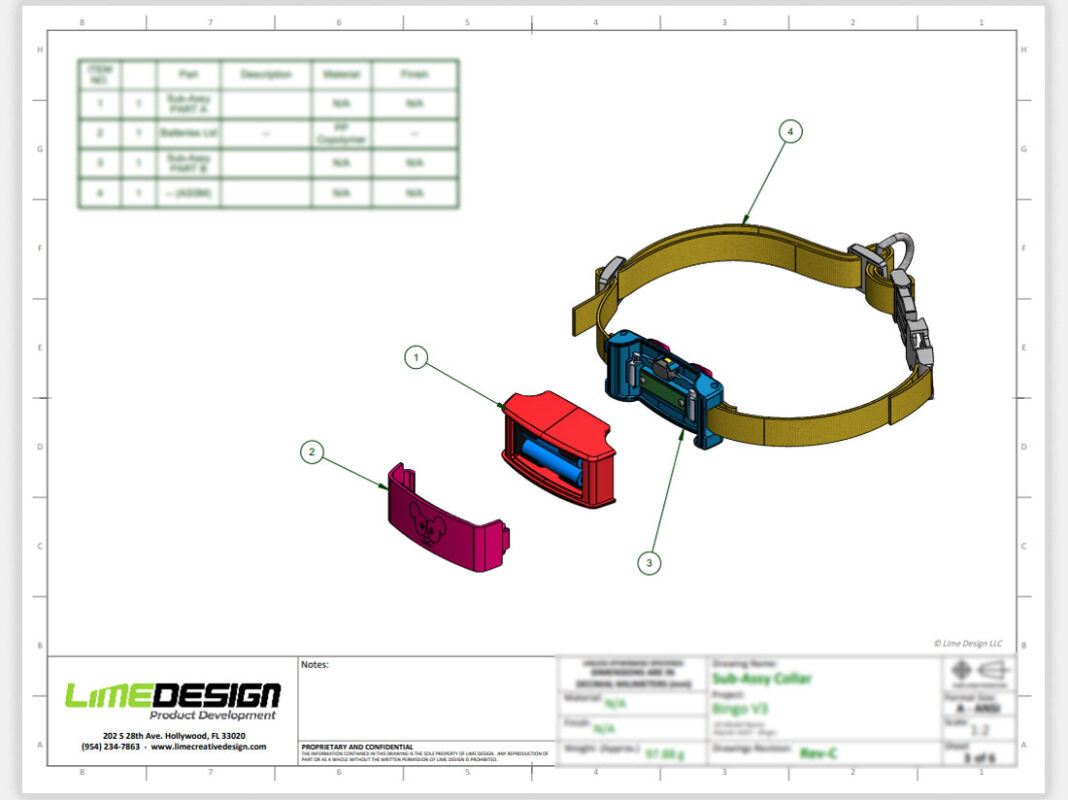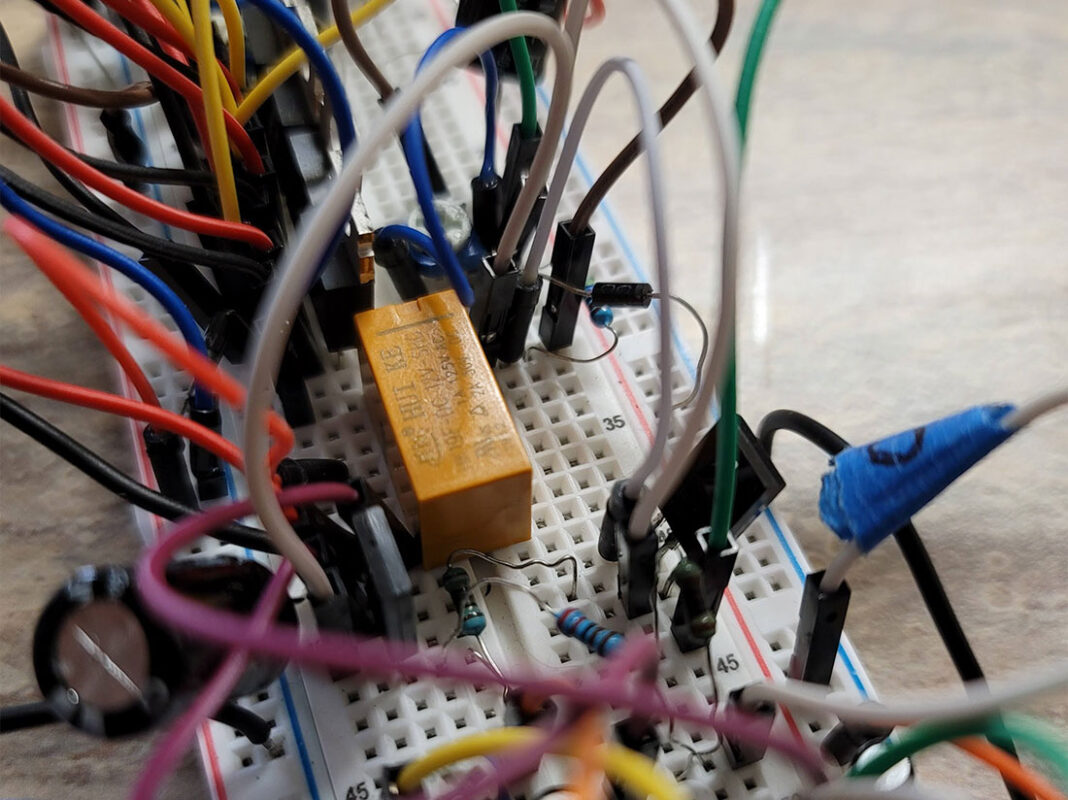
Lime Design has been bringing products to life for over 15 years. Along the way are continually perfecting our process. We find that working with patent attorneys early in the process allows the opportunity to create more patentable products. We use the sketches from the concept development stage to apply for a provisional patent application.
These images will be used so the lawyer can better describe the invention and its function and the applications it may be useful for.

“When it comes to Mechanical Engineering, it’s all about the details”. In this phase it is important to begin making your product idea into something that is manufacturable. This has to do with the materials you use and the way to the dimensions of components. Creating the right files for production the right way is what we make sure gets done.

Now that we have a 1:1 3D model, we will begin adding the details and tweaking the design for easy manufacturability. Here we are looking at materials, material thickness, how the product will be assembled, parting lines, and other essential manufacturing details. Also, at this stage, we are ready to review with the team and everybody involved in the project to discuss any modifications that may need to be made. Depending on what needs to be done, there may be an additional block of engineering added. It is very hard to tell how quickly we can resolve the engineering of your product due to unforeseen problems which may occur. But problems are all part of the process. Without reviewing and testing the things that are going wrong, we would be unable to fix them.

These drawings are needed for prototyping your product. 2D engineering drawings provide an easy reference of the tolerances that need to be met on critical dimensions. They also communicate how individual parts come together to make up assemblies and provide important inspection points. Your drawings are an essential reference document for quality control.

Throughout the whole process, we make sure everyone is on the same page. Once everything is resolved in the Mechanical Engineering phase, we will send you an electronic PDF to review the tech specs and sign to approve them. After you sign the technical drawings, we can start working on the first prototype.
Mechanical engineering plays a crucial role in product development by providing expertise in designing, analyzing, and optimizing the mechanical systems and components of products. Engineers in this field ensure that products are not only functional and reliable but also cost-effective to manufacture and maintain. Their contributions help bring innovative ideas to life, ensuring that products meet performance requirements while adhering to safety standards and regulatory guidelines.
Products that require mechanical engineering expertise span a broad spectrum, including automobiles, consumer electronics, industrial machinery, and medical devices. Mechanical engineering is essential for designing and optimizing the mechanical systems and components of these products, ensuring functionality, reliability, and efficiency. Whether it’s improving the performance of an engine, designing the framework of a robotic arm, or enhancing the ergonomics of a handheld device, mechanical engineering plays a crucial role in the development of a wide range of products.
Mechanical engineering is essential for your product as it ensures that mechanical systems and components function reliably and efficiently. Engineers in this field optimize designs to meet performance requirements, enhance durability, and minimize manufacturing costs. By leveraging mechanical engineering expertise, you can ensure that your product not only meets regulatory standards but also exceeds customer expectations, ultimately contributing to its success in the market.

Electrical engineering is essential for the development of a vast range of products that require electricity to function. These products include consumer electronics such as smartphones, laptops, and televisions, as well as industrial machinery, medical equipment, and transportation systems. Depending on what your idea is, it may require development from our talented electrical engineers.

“Electrical engineering is like the wiring of a house – it’s the backbone that powers everything, and without it, the house would be nothing more than an empty shell.” Just as the wiring of a house provides power to every room and appliance, electrical engineering provides the power and control systems that make a product function. It is a vital step in product development, ensuring that the product is safe, efficient, and reliable.
Founder and CEO – Rodrigo Lima

During this meeting, our electrical engineers meets with the client to gather, discuss, and define the electrical requirements of the product. This involves identifying the key features and functions that the electrical system must support, as well as the constraints and limitations that may impact the design. The meeting may also include discussions around regulatory requirements, safety standards, and industry best practices. By clearly defining the requirements, the engineers can ensure that the final product meets the needs of the end-users while also meeting any necessary regulatory or safety requirements. This meeting sets the foundation for the subsequent design and development phases of the project.

During this phase, our electrical engineers use the requirements gathered from our requirement analysis meeting to create a detailed design for the electrical system and components of the product. This process involves selecting the appropriate components, creating schematics, and performing simulations to ensure that the system functions as intended. The design must take into consideration factors such as safety, reliability, efficiency, and cost-effectiveness. The engineers must ensure that the electrical system and components are designed to meet the requirements of the end-users and any regulatory or safety standards that may apply. A well-designed electrical system is essential for the proper functioning of the product, and it is crucial to ensure that the design is thorough and meets all the necessary requirements before moving on to the prototyping phase.

During this phase, our electrical engineers build a physical prototype of the electrical system and components to test their design and functionality. This prototype is sometimes called a breadboard and is used to identify any flaws or areas for improvement in the design, and any necessary modifications or improvements are made at this stage. Prototyping also allows for thorough testing to ensure that the electrical system and components meet the requirements and specifications identified in the earlier stages of the process. This phase provides valuable insights into the performance of the electrical system and components, and any necessary adjustments can be made before moving on to the production phase. The prototyping phase ensures that the final product is safe, reliable, and meets the needs of the end-users.

The final step in electrical engineering involves finalizing the schematics, bill of materials, gerber files, and PCBA (Printed Circuit Board Assembly) design. This step ensures that all design details are complete and accurate, and all components have been correctly specified. The schematics and bill of materials provide a detailed breakdown of the electrical system, including all components and their respective part numbers. The gerber files contain the necessary data for manufacturing the PCB, and the PCBA design ensures that the components are arranged correctly on the PCB. This final step is crucial to ensuring that the final product meets all necessary requirements and specifications. Once this step is complete, we can proceed with prototyping of the entire product and continue with the development process.
Electrical engineering is essential for product development due to its role in designing and integrating electrical systems and components. Engineers in this field ensure that products function reliably, efficiently, and safely by incorporating appropriate electronics, power distribution systems, and control mechanisms. Their expertise not only drives innovation by enabling the integration of advanced technologies but also ensures that products meet regulatory standards and user expectations, contributing to their overall success in the market.
Not all products require electrical engineering, but many can benefit from it, especially those that incorporate electronic components or rely on electrical systems for functionality. Products such as consumer electronics, appliances, automotive vehicles, and industrial machinery often require electrical engineering to design and integrate electrical systems, control mechanisms, and power distribution networks. However, simpler products or those with purely mechanical functions may not necessitate electrical engineering expertise.
Electrical engineering can be challenging due to its complex concepts and mathematical principles. However, with dedication, persistence, and effective study strategies, individuals can master the subject and succeed in the field. While it may require significant effort and commitment, the rewards of pursuing electrical engineering, including career opportunities and contributions to technological advancement, make overcoming its challenges worthwhile.
Are you an inventor with a groundbreaking idea, but unsure of how to turn it into a reality? Look no further! Our product development firm specializes in partnering with inventors like you to bring innovative concepts to market.
Let us be your trusted partner in transforming your vision into a tangible product that revolutionizes the market. Contact us today to schedule a consultation and take the first step towards making your idea a success!
Thank you for showing interest in Lime Design, you can fill out the contact form below and tell us a little about your project and we will contact you to setup a discovery meeting to give you an accurate quote.
Upon completing this form you will be emailed an NDA (mutual non-disclosure agreement), please sign it as soon as you can.


English, Spanish, Portuguese
Copyright @ 2008-2023 | All Rights Reserved | Terms & Conditions

English, Spanish, Portuguese
Copyright @ 2008-2023 | All Rights Reserved | Terms & Conditions